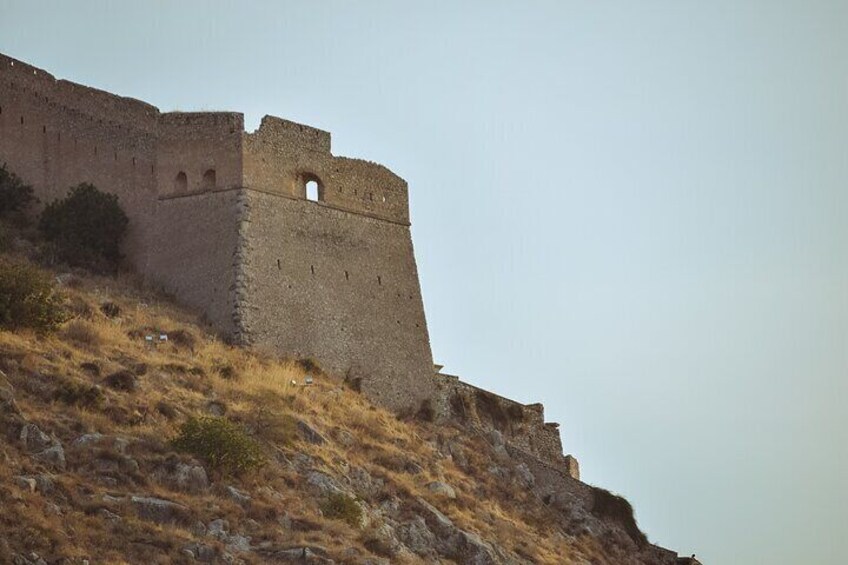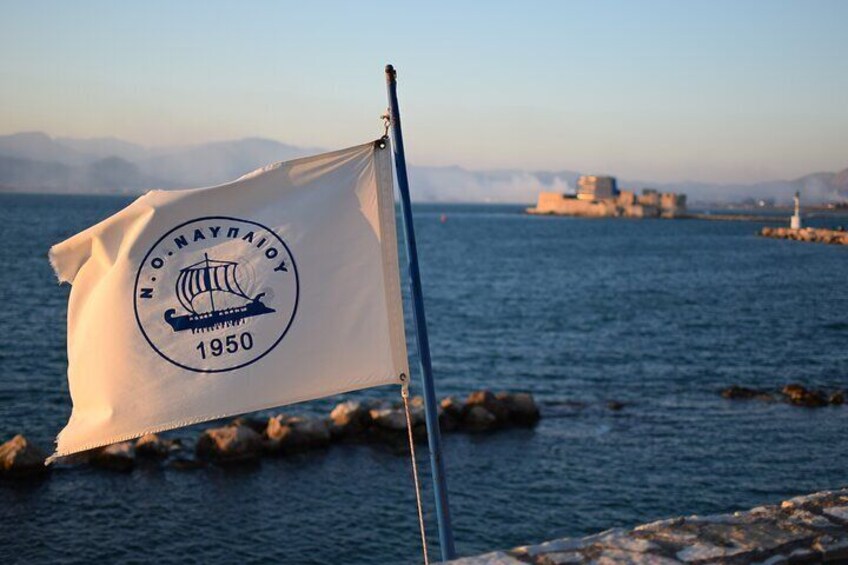Book your entire trip in one place, with free access to Mates Rates





Private Walking Tour with a Local Tour Guide in Nafplio
10/10
10 out of 10Features
- Free cancellation available
- 3h
- Mobile voucher
- Instant confirmation
- Selective hotel pickup
Overview
Discover the real Nafplio, the romantic city of Argolis, on a 3-hour walking tour with a local guide, ideal for every type of visitor. Start your adventure in the Venetian city by meeting your tour leader at the Land Gate, the only entrance to the city during the Venetian occupation, then you will also, pass by the point where Ioannis Kapodistrias, the first ruler of Greece, was assassinated.
Your tour leader will share stories of the charming city of Nafplio and its long history while walking through Syntagma Square, where the Venetian and neoclassical buildings such as the parliament and the Archaeological Museum dominate your surroundings.
At the port of the city, where you'll learn about the Bourtzi castle, a Venetian fortress built on a nearby island, which stands as the most recognised attraction of Nafplion.
Activity location
- Land Gate
- 21100, Nafplio, Greece
Meeting/Redemption Point
- The Land Gate
- 211 00, Nafplio, Greece
Check availability
Private Walking Tour with a Local Tour Guide in Nafplio in English
- 3h
- Opening hours: Sat 7:00 am-10:00 pm
- English
Pickup included
What's included, what's not
- Bottled water
- Surprise gift
- Live guide language available: English, Greek
- ice cream
- Breakfast
Know before you book
- Infants and small children can ride in a pram or stroller
- Service animals allowed
- Public transport options are available nearby
- Suitable for all physical fitness levels
- Important information: The walking tour can take place from 8 am to 9 pm. When you finalise the reservation, please contact us so that we can agree on the exact time you want to take place. Entrance in sights: it is a walking tour so we do not enter in sights with admission fees. In particular, we do not enter in the Archaeological Museum, the Bourtzi Castle, the War Museum. We DO enter at the rest of the sights (except they are closed). Pick up from your hotel inside the city of Nafplion or central meeting point (Land Gate)
Activity itinerary
Land Gate
- 15m
Church of Agios Spyridonas
- 10m
War Museum Nafplio Branch (Pass by)
Trianon - The Old Mosque (Pass by)
Archaeological Museum of Nauplion (Pass by)
Syntagma Square
- 20m
Vouleftiko (Old State House)
- 5m
Filellinon Square
- 5m
Bourtzi
- 10m
- Admission ticket not included
Five Brothers
- 15m
Akronafplia Fortress
- 30m
Dimarchio Nafpliou
- 15m
Platia Kapodistria
- 10m
Kolokotronis Park
- 10m
Megaro Armansberg (Pass by)
Church of Panaghia
- 5m
Location
Activity location
- Land Gate
- 21100, Nafplio, Greece
Meeting/Redemption Point
- The Land Gate
- 211 00, Nafplio, Greece